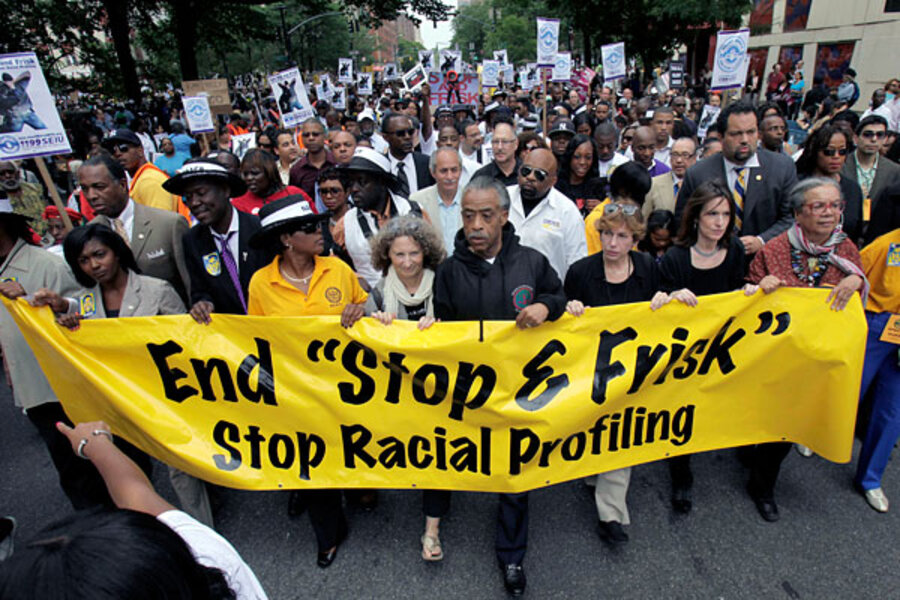The case in favor
Proponents of stop and frisk say the program is a proactive, rather than reactive, tool that has led to steep drops in New York’s crime rate. Whatever its flaws, they say there is no alternative as effective as stop and frisk.
“New York has had the steepest and longest crime drop of any city in the country,” says Mac Donald, noting that proactive policing has brought crime down 80 percent in minority neighborhoods since the early 1990s. “Only policing explains that crime drop.... Stop and frisk is the most important thing police officers on the beat can do.”
Dennis Smith, a professor of public policy at New York University, concurs.
In 1990, New York had 527,257 victims of serious crimes compared with 106,064 in 2011, according to data compiled by Professor Smith. In that same period, murders in the city dropped from 2,262 to 504. This is evidence that the program works, says Mr. Smith.
“The bottom line is [stop and frisk] in New York does accelerate crime declines in most categories of crime,” he adds.
Mac Donald acknowledges that the practice has flaws but says it’s the best tool law enforcement currently has.
“There’s no question if you are stopped and questioned and possibly frisked and you’re innocent, it is a humiliating and infuriating experience,” she says. “That is a real cost and the public has to acknowledge that.”
But she adds, “What’s the alternative? It is the lesser of two evils. Nobody’s yet come up with an alternative way of decreasing violence, robberies, getting guns off the street that is as effective…. It really does come down to a choice of what’s worse, getting stopped or getting shot?”
The case against
Opponents of stop and frisk say the controversial practice is a counterproductive tool that is both indiscriminate and discriminatory.
Besides representing a clumsy and inefficient tool to target crime, it alienates minorities and breeds resentment in communities where law enforcement agencies most need cooperation, they say.
“Stop and frisk, as practiced by the NYPD, does not reduce crime because it creates so much distrust between citizens and the police,” says Paul Butler, a law professor at Georgetown University and former Justice Department prosecutor. “The police would have a higher hit rate if they did random searches of people…. It’s more of a way for police to express their dominance of the street than to solve crime.”
Gangi of the Police Reform Organizing Project says stop and frisk does, in fact, work, but not for the right reasons. That’s because the program has conveyed to young minority men in New York that they may be stopped at any time. “So it makes sense that some of them will leave their weapon at home rather than bring it outside,” says Gangi. “In that limited way, it is effective.”
But it comes at a real cost, he adds.
“At same time the tactic creates serious problems that undermine law enforcement by seriously damaging any possibility of a cooperative relationship between cops and the [communities they patrol].”
Indeed, only 23 percent of blacks believe that police enforce the law without excess force and while treating all races equally, according to a survey by the Pew Research Center. By comparison, some 58 percent of whites believe police treat all races equally.







